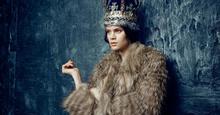Find Your Story
Transform Your Life!
What if someone could help you apply your results on the PMAI® assessment, not just to the present but also to understanding the story patterns in your whole life? What if that wisdom was shared with you in an easy-to-read workbook form with simple exercises that would reveal very useful insights about your life over your lifespan? What if it was also written by a brilliant psychologist who applies insights from narrative therapy, Jungian psychology, and cognitive psychology and who writes beautifully and with heart? And what if applying these exercises could help you better understand your life thus far, by yourself or with a trusted mentor, coach, counselor, or psychologist? Would you want to read it? Good news! There is such a book. Finding Your Story: Using Archetypes to Guide Your Personal Journey (2023), written by Hugh Marr, my co-author of the PMAI instrument.
Hugh helps you understand your memories from childhood through every life stage, identifying these stages through PMAI archetypal stories. Imagine revisiting various points of your life and thinking of them as a series of movies, where you consider the setting, yourself as a character, and the other people involved as supporting actors or adversaries. From here, you can identify the archetypal plotline you were living, the plotlines others might be living, and what happened with the happy or not-so-happy results of the decisions you made. This may lead to a recognition of how the storyline you enacted otherwise might have gone. You can also consider what you may have regarded as the moral of the story you were living at that time and whether you want to rethink it now.
Only recently have psychology and neuroscience revealed to us how our memories are not like screenshots of what happens, but rather the stories we told ourselves about those events. And every time we have a memory, we may unconsciously change the story we tell.
This is particularly important to know when revisiting one’s life because many memories may have been interpreted through the mind of a 5-year-old, 10-year-old, or 16-year-old—or later. In your case (or anyone’s), perhaps you told those stories when you were down on yourself or someone else you were furious with. Telling yourself a different story about that same event, as you see it from a more mature perspective, could help you revise stories that have been holding you back or undermining a relationship unnecessarily.
Finding Your Story can help you see some parts of your life very differently from before, as you also recognize the story you were telling and whether that storyline had any chance of ending well in that setting and with the others present. Faced with a similar setting and situation, you could then shift that plotline using your gift of hindsight. Doing this for events throughout your life can have miraculous results. Finding Your Story can also help you explore the flow of your life narratives and how they feed into your overall life story. Beyond that, it can help you make peace with challenging times or even failures and losses.
My favorite aspect of the book, however, is how it helps you discover the morals of the individual stories you have told yourself, allowing you to endorse or change them. Changing the stories you think or tell can change your life.
Over the years, I have worked on revisiting my memories with the purpose of understanding what I did not know at the time. However, reading Hugh’s book gave me new insights, including one about an early event in my own life. When I was only about five years old, I did something that was considered quite courageous at the time. It was viewed positively by my parents, but their praise was like a stamp of their desired archetype on what I now believe was my young archetypal impulse, thus confusing the expression of that archetype for much of my life. Hugh’s work also helped me put more emphasis on the setting of each life event, calling forth different versions of one of my core archetypes.
Finding Your Story can be helpful anytime, but it is particularly useful in times of transition, loss, or a new season in your life. It will be a trusted companion for any period of life when change is afoot, your personality is transforming, and you need a new story to make sense of the new directions you’re taking in life.
















_thumb.png)
_thumb.png)
_thumb.png)
_thumb.png)
_thumb.png)